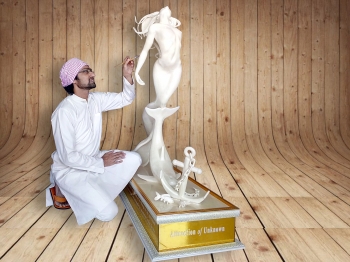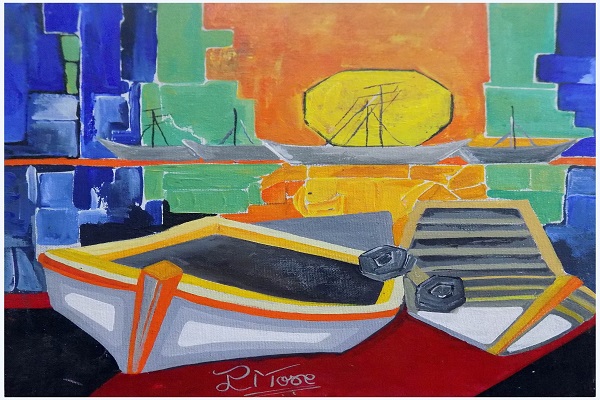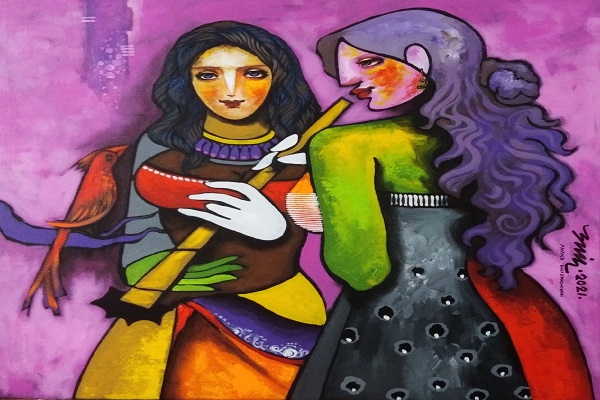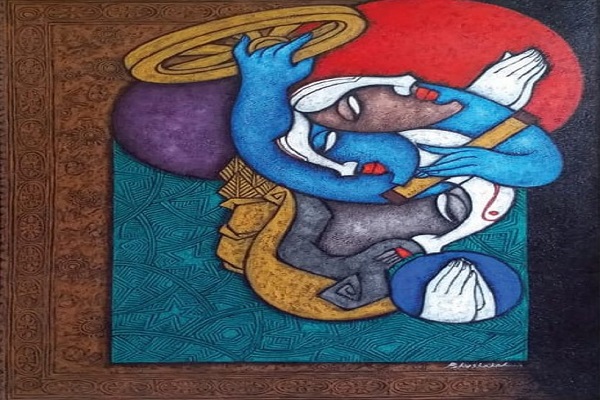
A modern painting is one that utilizes innovative techniques and styles that depart from traditional artistic norms from the 19th and 20th centuries. In this period, art expression shifted dramatically, leading to diverse and revolutionary works of art that challenged established norms. Modern paintings capture the essence of various movements, reflecting the dynamic cultural and social changes of their time.
The advent of the internet has revolutionized the way we access and purchase various goods, including art. Online platforms have emerged as vibrant marketplaces that provide art enthusiasts with unparalleled access to a global array of modern paintings. This shift has democratized art buying, allowing collectors to explore and acquire artworks that resonate with their tastes and preferences without geographical limitations.
Modern Paintings: Evolution and Characteristics
The evolution from traditional art to modern paintings marked a departure from the realistic representation of subjects. Artists sought to depict emotions, concepts, and experiences through innovative techniques, leading to the birth of numerous art movements that shaped the modern art landscape.
Key Characteristics of Modern Paintings:
1. Abstract Expressionism: This movement emphasized the spontaneous and emotional expression of artists, often through non-representational forms. Abstract expressionist paintings convey intense emotions and allow viewers to interpret them personally.
2. Cubism and Geometric Abstraction: Cubist artists like Picasso introduced fragmented, multi-perspective representations of subjects, challenging the conventional sense of space and form. Geometric abstraction further distilled forms into geometric shapes, creating visually complex yet structured compositions.
3. Minimalism: Minimalist paintings focus on simplicity and reduction, often characterized by clean lines, geometric shapes, and a limited color palette. The aim is to convey essential elements and ideas most straightforwardly.
4. Pop Art: Pop art incorporates imagery from popular culture, challenging the distinction between high and low art. Bright colors, consumer products, and famous personalities are often used to critique consumerism and celebrity culture.
5. Surrealism: Surrealist paintings explore the realm of the subconscious, merging dreamlike and fantastical elements with reality. These artworks challenge conventional logic, encouraging viewers to delve into their imaginative depths.
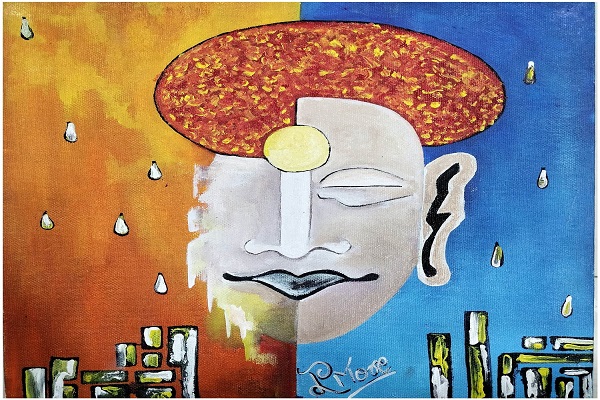
The Digital Era and Art Market
The Internet has transformed the art industry by breaking down barriers to access and information. Artists can now share their work directly with a global audience, and buyers can explore an extensive range of artworks without being limited by geographical constraints.
Growth of online art marketplaces
1. Convenience and Accessibility: Online art marketplaces enable collectors to browse, select, and purchase artworks from the comfort of their homes. This convenience has expanded the reach of art appreciation and acquisition.
2. Global Reach and Exposure: Artists can showcase their creations to a worldwide audience, fostering cross-cultural dialogue and recognition. It is advantageous for collectors to be able to access artworks from diverse locations.
3. Diverse Selection of Artists and Styles: To accommodate a wide range of likes and inclinations, online platforms feature a vast assortment of artists and genres. This openness encourages artistic variation and gives collectors the chance to investigate numerous creative vantage points.
Read More: Modern Art Paintings: An Era of the Groundbreaking Genre!
Benefits of Buying Art Online
The following are a few top gains of buying art online:
1. Wide Range of Options
Online art platforms offer an extensive selection of artworks, spanning various styles, genres, and periods. Collectors can discover hidden gems and explore artists they might not encounter in traditional galleries.
2. Direct Access to Artists and Their Portfolios
Buyers can interact directly with artists, gaining insights into their creative processes and intentions. This connection enhances the appreciation of artworks and provides a deeper understanding of the artistic vision.
3. Price Transparency and Comparison
Online platforms often provide transparent pricing information, enabling collectors to compare prices and make informed decisions. This transparency contributes to a more open and competitive art market.
4. Secure Payment and Shipping Options
Reputable online platforms prioritize secure payment methods and reliable shipping options, ensuring that artworks are delivered safely to buyers' locations.
5. Virtual Art Galleries and Augmented Reality Experiences
Virtual galleries and augmented reality technologies offer immersive experiences, allowing collectors to visualize artworks within their own spaces before making a purchase. This enhances the decision-making process and bridges the gap between the digital and physical art worlds.
Considerations for Online Art Purchases
1. Authenticity and Provenance Verification
Ensuring the authenticity of artworks is crucial. Online buyers should seek platforms that provide comprehensive information about the artist, provenance, and authenticity verification processes.
2. Online Reviews and Reputation of Sellers
Buyers can gauge the credibility of online platforms and sellers through reviews and ratings from previous customers. Positive reviews reflect reliable service and authentic artwork.
3. Return and Refund Policies
Understanding the platform's return and refund policies is essential in case the received artwork doesn't meet the buyer's expectations or is damaged during shipping.
4. Customization and Commission Options
Some platforms allow buyers to request customized artwork or commissions directly from artists. This personalized approach ensures that collectors acquire pieces tailored to their preferences.
Also Check: Modern Art for Modern Homes
Navigating Online Art Platforms
Navigating online art platforms requires a thoughtful approach to maximize the art-buying experience. Researching and identifying reputable platforms is crucial, to ensuring a secure and authentic transaction. These platforms offer intuitive browsing and filtering options, enabling collectors to refine their searches based on specific criteria like style, size, and price range.
Effective use of search features streamlines the discovery process, aiding in finding desired artists or themes. Creating accounts on these platforms provides personalized benefits such as wish lists and tailored recommendations. When making an online art purchase, a thorough exploration of artwork details, the artist's background, and transparent pricing is essential.
Initiating the purchase involves adding selected artworks to the cart and selecting shipping preferences. The evolving landscape of online art consumption encourages individuals to explore these platforms, connecting art enthusiasts with a diverse range of artists and styles, and transcending traditional boundaries.
Steps in Making an Online Art Purchase
1. Exploring the Artwork Details and Descriptions
Thoroughly reviewing artwork descriptions, dimensions, materials, and techniques ensures that buyers have a comprehensive understanding of what they're considering.
2. Reviewing Artist Information and Background
Understanding the artist's background, artistic journey, and previous works provide valuable context and enhances the emotional connection to the artwork.
3. Understanding Pricing and Additional Costs
Buyers should be clear about the artwork's price, any associated fees (such as taxes or shipping costs), and payment options before finalizing a purchase.
4. Adding to Cart and Initiating the Purchasing Process
Once satisfied with the choice, adding the artwork to the cart and starting the purchasing process is a straightforward step that initiates the transaction.
5. Selecting Shipping and Delivery Preferences
Buyers can select their preferred shipping options, ensuring that the artwork reaches them safely and in the desired timeframe.
Ensuring a Secure and Satisfying Transaction
Ensuring a secure and satisfying transaction in the realm of buying art online is paramount to both collectors and artists. Secure payment methods and data protection mechanisms are integral aspects, of safeguarding buyers' financial information and personal details. Reputable online platforms employ encryption and advanced security protocols, assuring buyers that their transactions are shielded from potential threats.
Order confirmation and tracking systems provide a sense of assurance, allowing buyers to monitor the progress of their purchases from dispatch to delivery. Unboxing the received artwork becomes a moment of anticipation and excitement, with careful inspection ensuring that the artwork arrives in the expected condition. Addressing any concerns promptly is pivotal, as it ensures transparency, trust, and satisfaction. Ultimately, a secure and satisfying transaction builds confidence in the process of buying art online, encouraging continued exploration and engagement within the digital art sphere.
Interesting Blog: Riveting Modern Art Paintings that Define the Genre
Emerging Trends in Buying Art Online
1. Virtual Reality Exhibitions and Immersive Experiences
Virtual reality technology enables art enthusiasts to attend exhibitions and engage with artworks in immersive virtual spaces, transcending physical limitations.
2. Blockchain Technology for Provenance and Ownership Tracking
Blockchain offers a secure and transparent method for tracking an artwork's provenance and ownership history, ensuring its authenticity and value.
3. Online Art Auctions and Bidding Platforms
Online auctions and bidding platforms provide dynamic spaces for collectors to acquire artworks through competitive bidding, adding an element of excitement to the purchasing process.
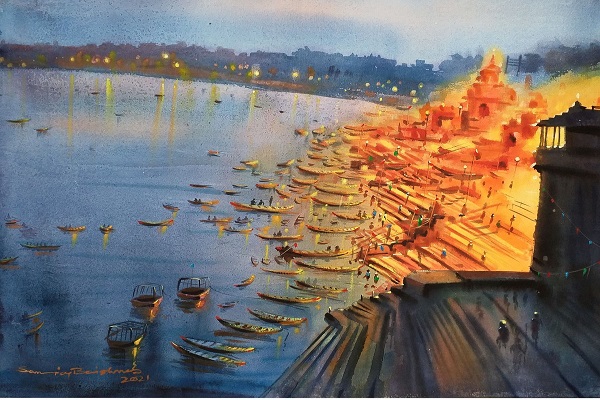
Read More: True Objectives of Modern Art Paintings
Wrap Up!
Exploring modern paintings and online art buying unveils a dynamic fusion of creativity and connectivity. Emerging from traditional norms, modern artworks mirror societal evolution through abstract expressionism, cubism, minimalism, pop art, and surrealism. Online platforms democratize art access, offering convenience, direct artist engagement, transparent pricing, and secure transactions.
Navigating platforms involves thorough research and choice-making. Secure payments, order tracking, and responsive customer support ensure reliable transactions. With evolving technology, virtual reality exhibitions, blockchain tracking, and online auctions elevate art engagement. This fusion of modern paintings and digital platforms invites exploration, celebrating colors, compositions, and emotional connections, enriching our lives with vibrant expressions.
















